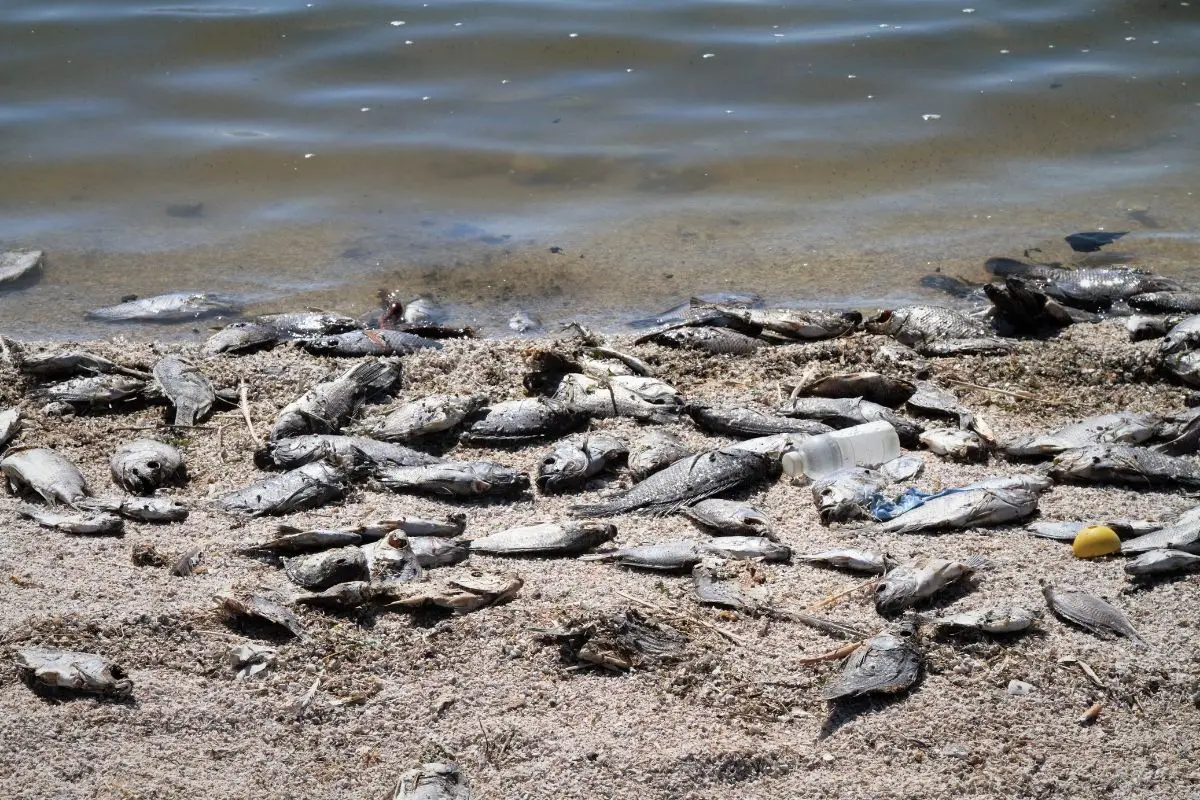
Imagine that you’re a fisherman who likes to spend his days on the lake. You’ve seen the turnover occur a few times and have been wondering if it’s killed any fish in the area. You’ve also heard that it can have some pretty severe effects on fish populations, so you’d like to learn more about it.
In this article, we’ll discuss what lake turnover is, why it happens, and what its effects are on fish populations.
What is Lake Turnover?

Lake turnover is an important process that happens in all bodies of water. It plays a crucial role in the health of aquatic ecosystems and can have a significant impact on fish populations. According to National Geographic, lake turnover is the process by which a body of water renews itself.
It occurs when the warmer, lighter water at the surface of the lake mixes with the colder, denser water at the bottom. This process is known as convection, and it happens in all lakes on a regular basis.
Why Does Lake Turnover Happen?
Lake turnover happens for a few reasons. The first is that it helps to oxygenate the water. As the warmer, lighter water at the surface mixes with the colder, denser water at the bottom, it brings oxygen down from the surface and circulates it throughout the entire lake.
This is important because it helps to keep the water clean and habitable for aquatic life. Another reason why lake turnover happens is that it helps to regulate the temperature of the water. As the colder, denser water from the bottom of the lake mixes with the warmer, lighter water at the surface, it helps to even out the temperature of the entire body of water.
This is important because it prevents the water from becoming too cold or too warm, which can be harmful to fish and other aquatic life. Finally, lake turnover helps to clean the sediment that has accumulated at the bottom of the lake. As the water mixes, it brings the sediment up from the bottom and circulates it throughout the entire body of water.
This helps to keep the lake clean and clear.
What are the effects of lake turnover on fish populations?
The effects of lake turnover on fish populations can be both positive and negative. On the one hand, turnover helps to oxygenate the water and circulate nutrients, which is essential for the health of fish and other aquatic life. On the other hand, turnover can also be harmful to fish populations if it happens too frequently or if the water temperature changes too dramatically.
One of the most damaging effects of lake turnover is known as “thermal shock.” Thermal shock occurs when the water temperature changes too quickly and drastically. This can happen if the water temperature at the bottom of the lake is much colder than the water temperature at the surface.
When this happens, the fish can become stunned or even die. Another effect of lake turnover is known as “stratification.” Stratification occurs when the different layers of water in the lake do not mix completely.
This can happen if the water at the bottom of the lake is much colder than the water at the surface. When this happens, the fish can become stratified, which means that they are unable to move between the different layers of water. This can be harmful to fish because it prevents them from being able to access the oxygen and nutrients that they need to survive.
How can you tell if a lake has undergone turnover recently?
There are a few signs that can indicate that a lake has undergone turnover recently. The first is a change in the water temperature. If the water temperature at the surface of the lake is much colder than the water temperature at the bottom, it is likely that the lake has undergone turnover.
Another sign of recent turnover is a change in the water clarity. If the water is suddenly much clearer than it was before, it is likely that the lake has undergone turnover. Finally, a change in the fish population can also be a sign of recent turnover.
If there are suddenly fewer fish in the lake, it is likely that the lake has undergone turnover.
What are the signs that lake turnover has killed fish populations in the area?

The most obvious sign that lake turnover has killed fish populations in the area is a sudden and drastic decrease in the number of fish. If there are suddenly fewer fish in the lake, it is likely that the turnover has killed them. A change in the water clarity can also be a sign that lake turnover has killed fish populations.
If the water is suddenly much clearer than it was before, it is likely that the turnover has killed the algae and other aquatic life that was clouding the water.
What factors influence how often lake turnover occurs and how severe its effects are on fish populations?
There are a few factors that can influence how often lake turnover occurs and how severe its effects are on fish populations. One of these is the amount of rainfall in the area. If there is more rainfall, it can cause the water level in the lake to rise, which can trigger turnover.
Another factor that can influence turnover is the temperature of the air. If the air temperature is colder, it can cause the water at the bottom of the lake to cool down, which can trigger turnover. Finally, the size of the lake can also influence how often turnover occurs.
If the lake is small, it will turn over more frequently than if it is large. This is because the smaller the lake, the more quickly the water temperature can change. All of these factors can influence how often lake turnover occurs and how severe its effects are on fish populations.
Are there any measures that can be taken to mitigate the effects of lake turnover on fish populations?
There are a few measures that can be taken to mitigate the effects of lake turnover on fish populations. One of these is to add aeration to the lake. This can help to keep the water oxygenated and prevent fish from becoming disoriented.
Another measure that can be taken is to stock the lake with more fish. This can help to offset the loss of fish that may occur during a turnover. Finally, it is important to monitor the lake for signs of turnover.
This can help to ensure that measures are taken quickly to mitigate the effects of turnover on fish populations.
Conclusion
Lake turnover can be harmful to fish populations, but it is possible to take steps that will reduce the impact of turnover on local aquatic life. We hope this article has given you a better understanding of what causes lake turnover and how its effects may be mitigated in your own community. For more information about these topics or for help with mitigating the impacts of lake turnover, please contact your local extension office.



